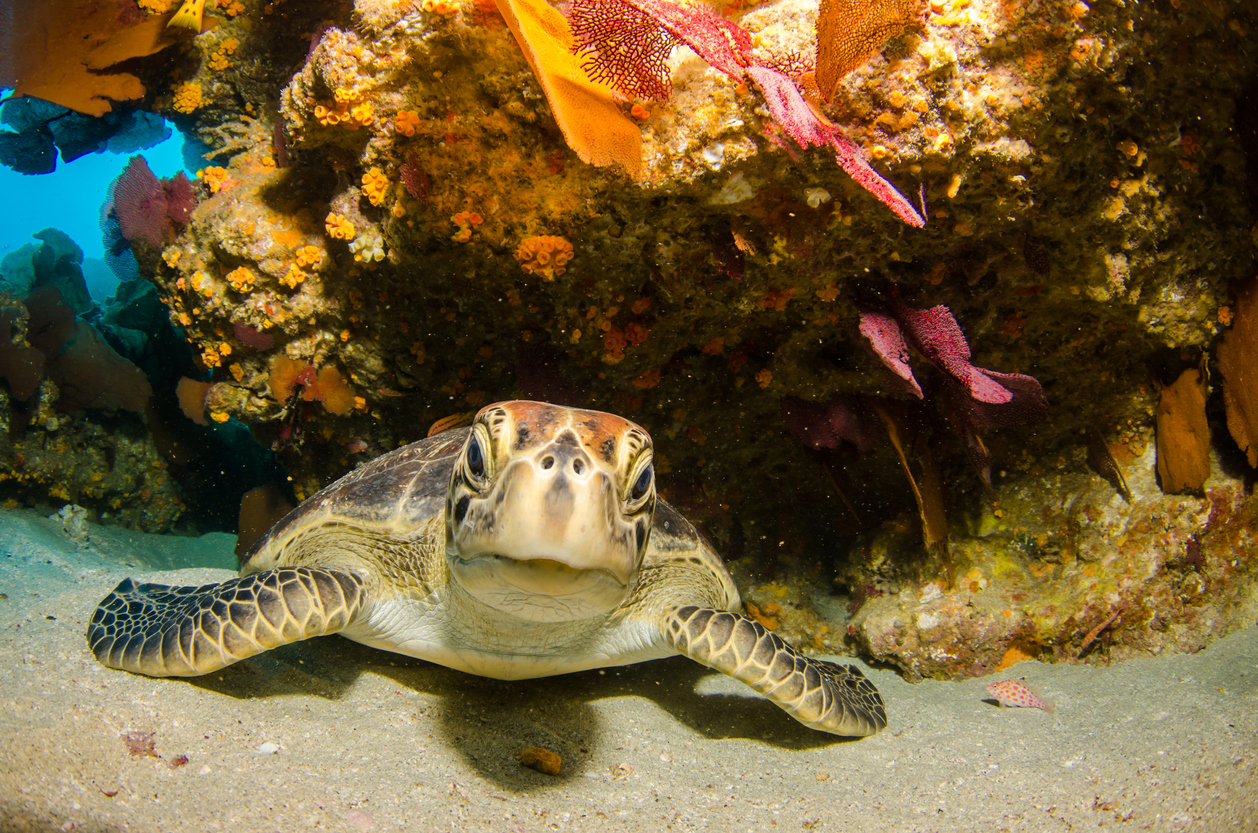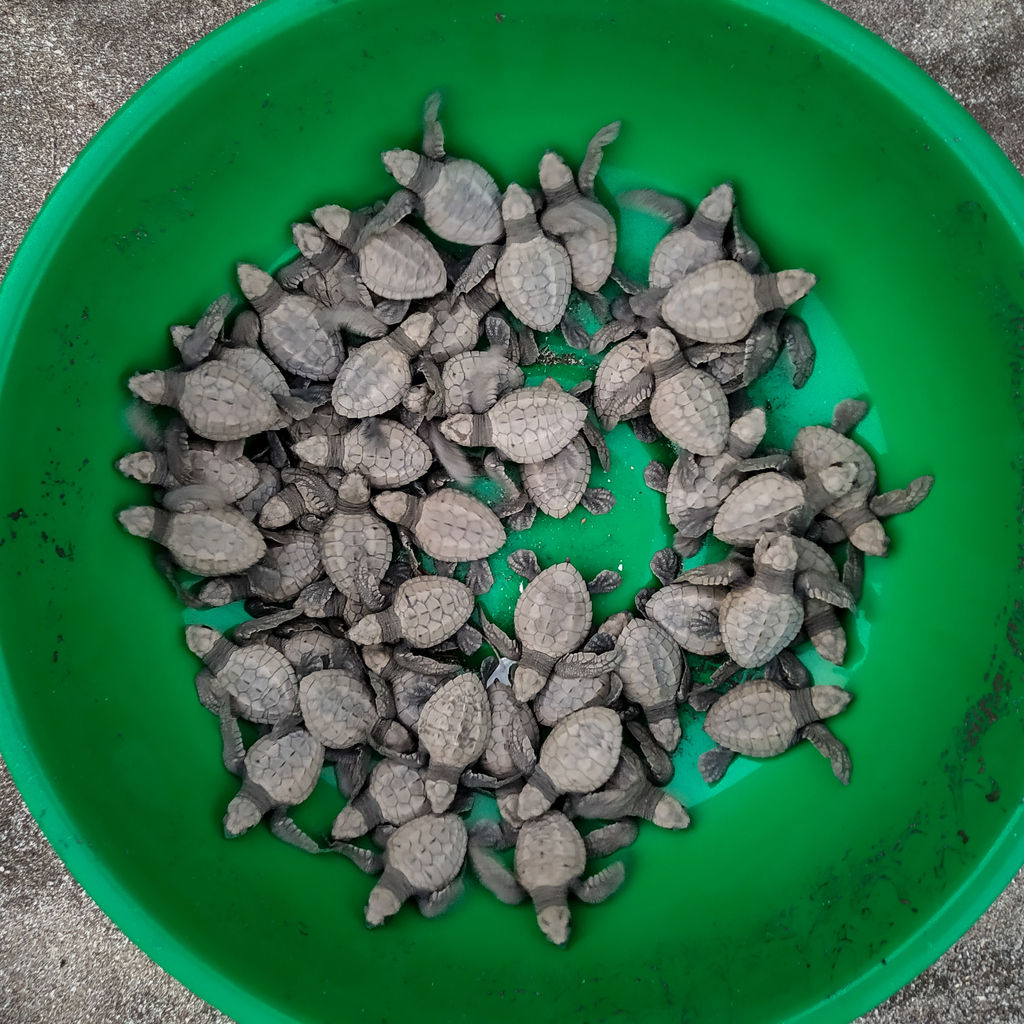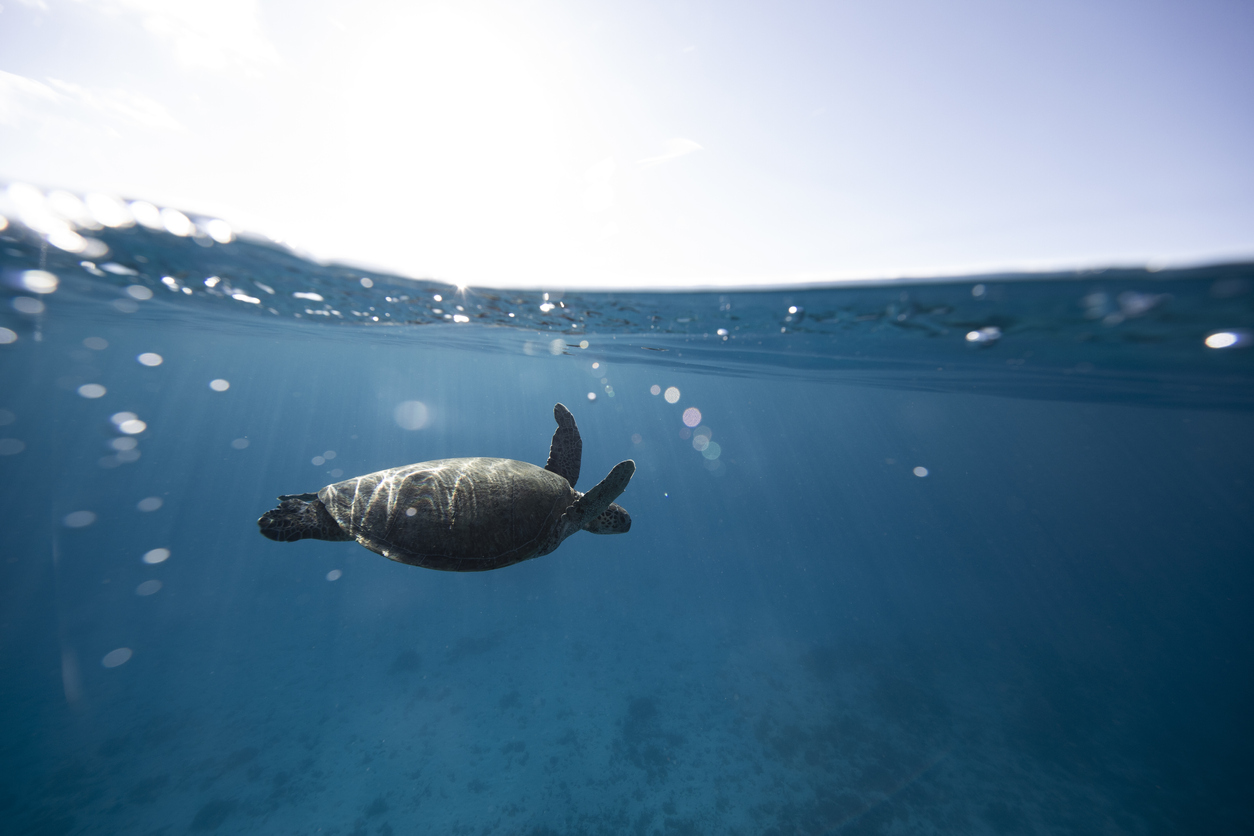All about the nesting season of Costa Rica Sea Turtles.

Costa Rica is home to four main species of sea turtles. Both the Caribbean and the Pacific shores host numerous nesting sites that are critical for the continuation of large numbers of each species. There are specific times of the year when you can witness sea turtles nesting and hatching on a grand scale in Costa Rica.
Let’s learn about it!
1. Leatherback Turtle.
The leatherback turtle is the largest living sea turtle. It is also a species that has rapidly declined in numbers mainly due to human influences. They grow to between 1.2 and 2.4 meters (4 and 8 feet) long and can weigh upwards of 360 kilograms (800 pounds). The leatherback turtle has been cruising around the world’s oceans (Pacific, Atlantic and Indian Ocean) for more than 100 million years.
When to see it.
On the Caribbean side, they nest between March and May. On the Pacific coast, between September and March.
Where to see it.
Las Baulas National Marine Park in Playa Grande on the Pacific coast is one of the premier leatherback turtle nesting sites. The Tortuguero National Park and the Gandoca-Manzanillo Wildlife Refuge on the Caribbean coast host nesting leatherback turtles during the months when they are not nesting on the Pacific side. The leatherback turtle populations in Costa Rica have been significantly decimated though, so seeing these gentle giants is not always a guarantee even during the peak season.

2. Olive Ridley
The Olive Ridley sea turtle is one of the most abundant sea turtle species, as well as being one of the smaller ones. They typically only weigh between 34-45 kilograms (75-100 pounds). Olive Ridley sea turtles return to the same beach that they hatched from. In a few special places they nest in large masses called arribadas. The arribadas are timed with the tide and the moon cycle. Witnessing an Olive Ridley arribadas is an experience unmatched by any other.
When to see it.
September and October are the two best months to potentially witness Olive Ridley arrivals. They do continue to nest for several more months on the Pacific coast, however it is usually on a smaller scale.
Where to see it.
Ostional Wildlife Refuge and the Santa Rosa National Park are the two most famous Olive Ridley nesting destinations, however there are a few other nesting sites where Olive Ridleys visit before and after those two peak months. It is very important that you are respectful of the nesting mothers and give them plenty of space.
3. Hawksbill.
The Hawksbill sea turtle has the most exquisite shell. Unfortunately, because it is so beautiful, their populations have been drastically decimated due to the demand for “tortoiseshell” jewelry and decor. Female Hawksbill turtles will nest up to four times in a season and can lay upwards of 200 eggs each time.
When to see it.
March through October are the best months to spot Hawksbill nesting and hatching on the Caribbean coast of Costa Rica.
Locations.
Hawksbills prefer to nest on the Caribbean coast. They can however be spotted feeding in the waters off Golfo Dulce in the South Pacific region of Costa Rica. They nest in the Cahuita National Park, Gandoca-Manzanillo Wildlife Refuge, and the Tortuguero National Park.

4. Green Sea Turtle.
The green sea turtle is a massive and beautiful sea creature, smaller only than the leatherback turtle. A full grown adult can weigh up to 225 kilograms (500 pounds). Green sea turtles are grazers and eat mainly seagrass, algae and other types of marine plants. Green sea turtles will lay upwards of 700 eggs per nesting season.
When to see it.
July through October is the peak nesting and hatching season for the green sea turtle.
Where to see it.
The most famous green sea turtle nesting site in Costa Rica is on the Northern Caribbean coast, especially within the Tortuguero National Park. The Tortuguero National Park is one of the most important green sea turtle nesting sites in the world.
